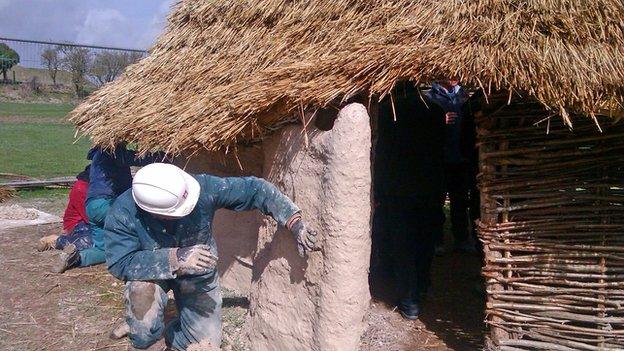Stonehenge project compares Neolithic building methods
- Published

The project aims to recreate the buildings which may have existed in Neolithic times
An experiment is under way in Wiltshire to find out more about Neolithic building methods.
Using archaeological evidence unearthed from nearby Durrington Walls, three structures are being built at Old Sarum Castle, near Salisbury.
The English Heritage project aims to discover what was the most efficient way of building with locally-sourced materials.
The final reconstructions will be built at Stonehenge later this year.
They will be put up outside the new visitor centre.
The experiment is part of a £27m English Heritage scheme looking at how the setting of the ancient monument can be improved.
The recreated Neolithic buildings will form part of an "interactive and experiential" external exhibition at the 3,500-year-old World Heritage site.
The Dorset-based Ancient Technology Centre has been commissioned to construct the three prototype homes.
Luke Winter from the centre said the project, external aimed to look at what type of buildings may have been around at the time.
"The evidence from Durrington Walls several years ago brought to light the remains of several different types of building," he said.
"We're trying to reconstruct what they looked like above ground.
"On each of the three buildings we are trying different materials and methods and at the end we can say which is most likely to have been used."
- Published2 October 2012
- Published11 July 2012
- Published11 July 2012